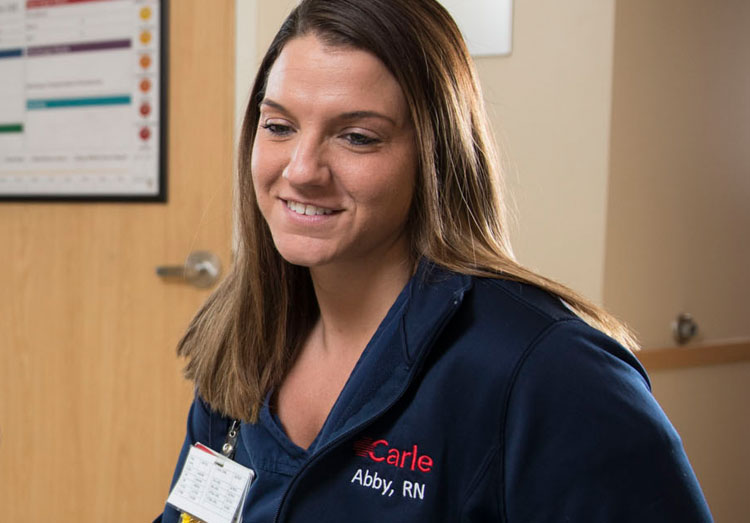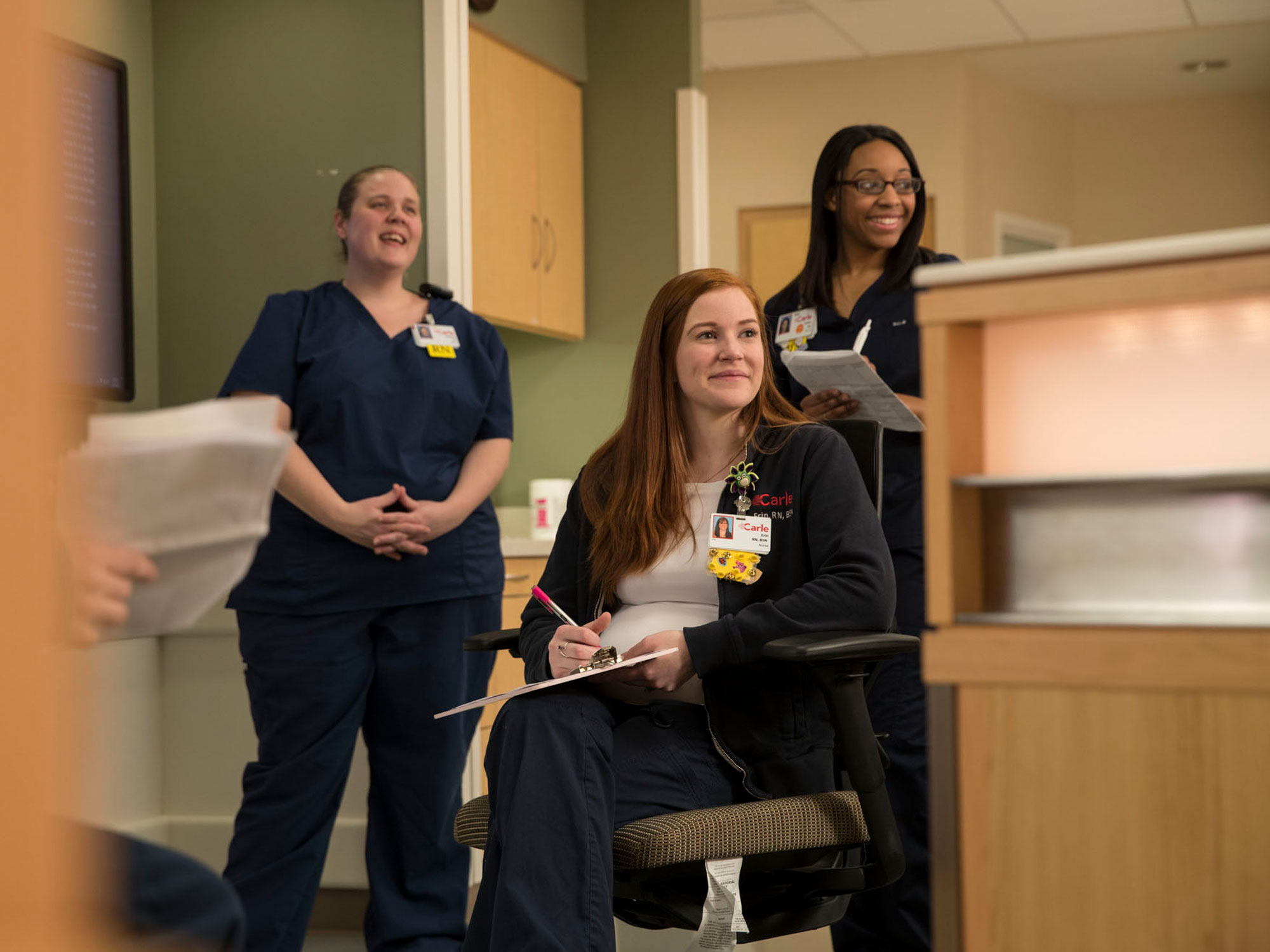
The Carle Labor and Delivery (LD) patient population is increasing considerably. With this growth, space can present a challenge. It was not uncommon for waiting patients to receive additional triage in a recovery bay or even in the hallway.
Obstetrics (OB) patients are very specialized, requiring unique care. Patients over 20 weeks typically bypasses the Emergency Department (ED) and go directly to LD.
“These patients historically are seen on a first-come, first-serve basis,” Krysteen Cunningham, BSN, RNC-OB, OB and Quality Outcomes coordinator said. “This could cause a lower priority patient to be seen first while a patient with greater needs waits. We want to be more intentional about whom to see and when”.
The initiative also set a standard response time for nurses to see patients, contact providers and make care decisions. Aligning the provider groups helped to simplify the workflow across the system.
“A better triage process was needed,” Cunningham aid.
Additional measures include:
The triage nurse and OB hospitalist work closely together.
“This process and flow is so much quicker,” Cunningham said. “It helps with decision making, patient placement and timeliness of care”.
With these new changes in place, nurses meet the 10 minute triage goal over 80 percent of the time; providers meet the 30 minutes to bedside goal over 90 percent of the time and the 2 hour disposition goal over 70 percent of the time.
In the future, this project hopes to extend the special ED-OB room with three additional beds. The triage nurses are also receiving formal maternal-fetal triage training to become certified in their new, unique role.
“I am encouraged by this process because it is an effective way to provide excellent care for our patients,” Cunningham said.
- Three rooms on reserve for later term patients, designated for OB-ED purposes.
- Nurses with excellent rapid assessment skills are notified and assigned as OB triage nurses. In this role they assess the patient and contact the provider within 10 minutes.
- A new provider process for inpatient OB hospitalist to see patients and be at the patient’s bedside within 30 minutes.
- Within 2 hours OB hospitalists should establish the plan of care and a disposition ordered (discharge, admit or observation).
